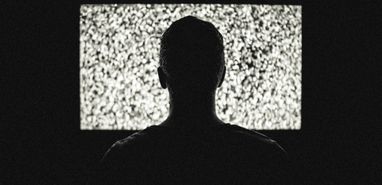
Over the years, technology has taken a – somewhat scary at times – dive straight into sci-fi territory with self-driving cars and phones that may actually fold into our pockets. But with such leaps forward in technology, how much do we actually know about the gadgets that we’re bringing into our homes? Well, there is no better cautionary gadget tale than the story of the television that was sold solely to spy on those who watched it.
Even scarier, in a Skynet-type affair, these said televisions – created by Vizio – are now turning against their manufacturers to suggest that viewers should now sue its creators via a message on screen. It’s enough to make you opt for a nice book.
Where did the drama all begin?
The Vizio, who are based in California, drama all started way back in November 2015 after it was revealed that the company were using their televisions as a means to spy on their customers and collect data on their viewing habits. Outed by a journalistic watchdog company named ProPublica, each Vizio television was privy to a super-secret added feature that would record what you watched on television, the times you watched and matched this to the area that you lived in. This data was then sold to advertisers who could use your information find your phones and other smart devices and then send you targeted adverts based on your viewing habits. So much for secretly binge-watching Sex and City when you thought no one was looking!
Vizio, of course, argued that any data collection was totally legal and innocent, with viewing habits being completely anonymous and used these claims as a defence when a class action lawsuit was brought against them.
However, a federal judge dismissed their innocent claims twice, as although the company claims that any data collected didn’t have information that could personally identify viewers, it was found that researchers were able to discover who was watching what shows based on their IP address, zip codes and other data. It was also suggested that Vizio made turning off the feature – that they did not adequately tell customers existed – meant trying to navigate various obscure settings. Something that the average viewer was never likely to come across.
Perhaps even more damning, despite Vizio trying to obtain a motion to dismiss a class action lawsuit against their company – which would allow consumers to receive damages – the company had already conceded a $2.2 million settlement with the Federal Trade Commission (FTC) in February 2017.
Now as the class action lawsuit continues, the plaintiffs led by Girard Gibbs have agreed with Vizio that a push notification should be sent to all the affected smart televisions, inviting those customers to join in with the class action lawsuit, which was set to take place from September 12th.
However, this date has been set back due to some technical and legal implications of sending the message to its customers, and a soft deadline has been set for October 3rd this year for both the wording of the message and how the company intends to send said message. This is because class action lawsuits – a term given to a case that has affected a large number of people – must notify, in accordance with US law, all those found to be affected (after reasonable research) and inform them of the said lawsuit in the most effective way.
Normally notifications are sent via email, letter or even advertising, but as this is a case involving smart televisions that are connected to the internet themselves, it was thought that a message appearing on people’s screens as they watch television would be the most effective way of informing the most people.
Before the message is sent through, certain technical issues need to be ironed out by Vizio. After all, the idea of a television notifying its ‘owners’ is a totally alien concept. The company will need to test its method to ensure the message will be displayed correctly and coherently on people’s televisions to allow for maximum understanding.
If affected consumers do join the lawsuit, they would be eligible to receive a portion of any damages won against Vizio if the lawsuit against them is successful. Which is what makes the push notification so important, so that every affected consumer knows about the lawsuit.
The lawsuit itself is only eligible to consumers to users in the US, but the case itself holds worldwide attention for those curious as to how well both the message sent to televisions will work and to see if – and how much – Vizio are fined for their actions.
By Steph Freeman
Updated on 26th March 2019